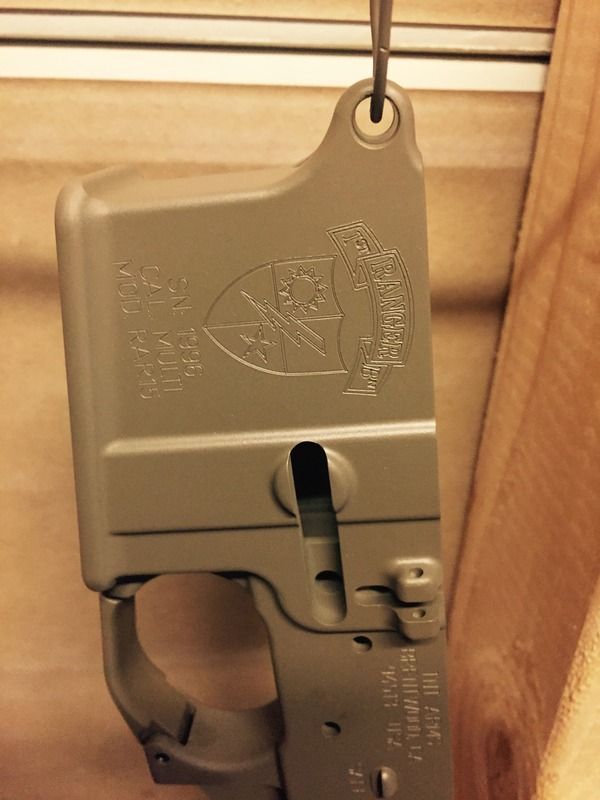Post by Admin on Feb 7, 2016 15:36:57 GMT -8
Microstamping legislation was passed in California AB 1471 and signed into law on October 14, 2007, but specifically exempts law enforcement.[4] The law has generated controversy.[2][3]
This technology was to be required in California starting in 2010, however, it is on hold and law enforcement is specifically exempt.[4] One group, the Calguns Foundation, paid a $555 fee to keep the patent active in order to delay implementation.[5] On May 17, 2013, California Attorney General Kamala Harris announced that micro-stamping had cleared all technological and patenting hurdles and would be required on newly sold semiautomatics, effective immediately. However, handguns already approved for sale but lacking this technology may still be sold as long as they remain on the Roster of Safe Handguns.[6]
In January 2014, the two largest handgun manufacturers in the U.S., Smith & Wesson and Sturm, Ruger & Co., announced their intent to stop selling new semi-automatic handguns in California. They cited the microstamping law as their reason.[7]
Two trade groups, the National Shooting Sports Foundation (NSSF) and the Sporting Arms and Ammunition Manufacturers Institute (SAAMI), have filed a lawsuit seeking both declaratory and injunctive relief against what the groups perceive as an attempt to ban semi-automatic handguns in the state.[8] In February 2015 a federal judge upheld the microstamping requirement, ruling that it does not violate the Second Amendment.[9]
Objections[edit]
The SAAMI trade group raises these objections:
Unscrupulous individuals could collect discarded brass from a firing range and salt crime scenes with microstamped cases, thereby providing false evidence against innocent people and increasing the workload for investigators.[13]
Firing a large number of rounds will wear down the microstamp.[13]
Microstamping is an immature, sole source technology, and has not been subjected to sufficient independent testing. Transfer of microstamped marks to the cases is less reliable than proponents claim.[13]
High costs for testing the efficacy of the technique must be passed on to customers, increasing the cost of firearms for those who obtain them legally.[13]
Guns manufactured before an effective date are exempt and the bill does not extend to guns outside of California. There's no possibility that this bill would ever cover enough guns to provide the investigative advantage claimed for it by the proponents.[13]
Specific to California, the chief of the Oakland Police Department says:
Firearms sold to law-enforcement are exempt. Problems could arise if a police officer's firearm is used in a crime or stolen, and the fact that a firearm is "unsafe" if not provided with stamping technology exposes the police to liability.[14]
Most firearms used in crime are stolen or purchased in the secondary marke
This technology was to be required in California starting in 2010, however, it is on hold and law enforcement is specifically exempt.[4] One group, the Calguns Foundation, paid a $555 fee to keep the patent active in order to delay implementation.[5] On May 17, 2013, California Attorney General Kamala Harris announced that micro-stamping had cleared all technological and patenting hurdles and would be required on newly sold semiautomatics, effective immediately. However, handguns already approved for sale but lacking this technology may still be sold as long as they remain on the Roster of Safe Handguns.[6]
In January 2014, the two largest handgun manufacturers in the U.S., Smith & Wesson and Sturm, Ruger & Co., announced their intent to stop selling new semi-automatic handguns in California. They cited the microstamping law as their reason.[7]
Two trade groups, the National Shooting Sports Foundation (NSSF) and the Sporting Arms and Ammunition Manufacturers Institute (SAAMI), have filed a lawsuit seeking both declaratory and injunctive relief against what the groups perceive as an attempt to ban semi-automatic handguns in the state.[8] In February 2015 a federal judge upheld the microstamping requirement, ruling that it does not violate the Second Amendment.[9]
Objections[edit]
The SAAMI trade group raises these objections:
Unscrupulous individuals could collect discarded brass from a firing range and salt crime scenes with microstamped cases, thereby providing false evidence against innocent people and increasing the workload for investigators.[13]
Firing a large number of rounds will wear down the microstamp.[13]
Microstamping is an immature, sole source technology, and has not been subjected to sufficient independent testing. Transfer of microstamped marks to the cases is less reliable than proponents claim.[13]
High costs for testing the efficacy of the technique must be passed on to customers, increasing the cost of firearms for those who obtain them legally.[13]
Guns manufactured before an effective date are exempt and the bill does not extend to guns outside of California. There's no possibility that this bill would ever cover enough guns to provide the investigative advantage claimed for it by the proponents.[13]
Specific to California, the chief of the Oakland Police Department says:
Firearms sold to law-enforcement are exempt. Problems could arise if a police officer's firearm is used in a crime or stolen, and the fact that a firearm is "unsafe" if not provided with stamping technology exposes the police to liability.[14]
Most firearms used in crime are stolen or purchased in the secondary marke


